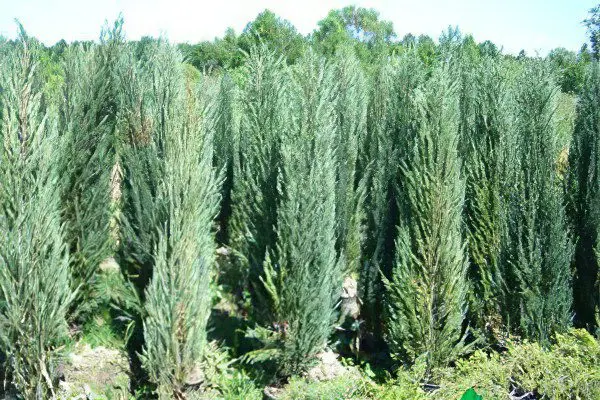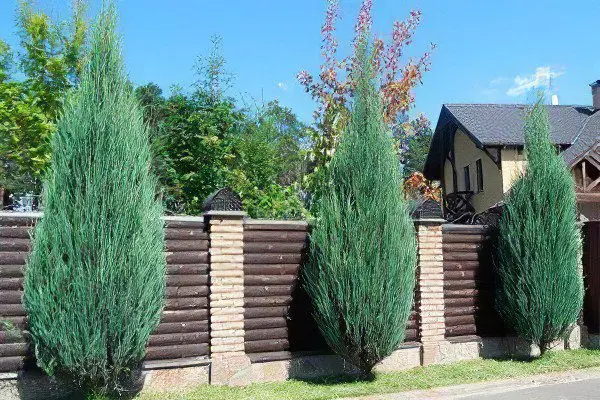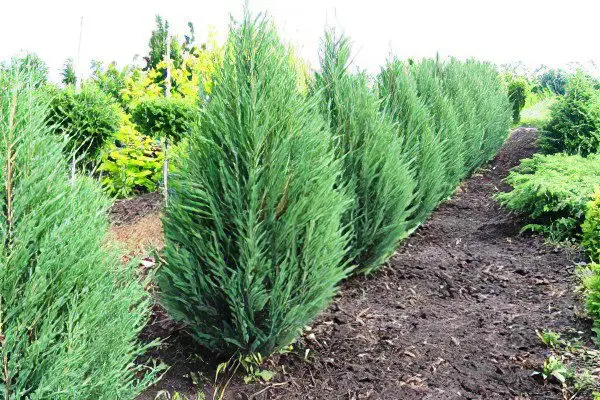Contents

Juniper rocky is a plant belonging to the genus Juniperus, the Cypress family. It occurs naturally in North America, Canada, the United States, and northern Mexico. The plant prefers rocky cliffs and mountain slopes. Compared to other types of junipers, rocky juniper is quite rare in the natural environment, but is actively cultivated by people.
Rocky juniper is not a large plant, it rarely exceeds 13 m in height. The crown begins to form almost from the very base of a shrub or tree, the crown shape of young junipers is conical. As the plant matures, the crown becomes rounded. The bark is dark brown, the shoots are greenish-blue.
The needles of the plant are represented by a wide range of colors. There are junipers rocky bluish-blue, blue-gray, dark green. The leaves are needle-shaped and can be up to 12 mm long. Cone berries are rounded, dark blue in color, covered with a bluish coating on top. Seeds are formed at the end of the second year of the plant’s life. Each cone usually contains two seeds.
In total, there are about 20 varieties of rocky juniper, the most common of which are: Skyrocket, Blue Arrow, Blue Hafen, Mondlow, Wichita Blue, Silver Star.
The use of rocky juniper in landscape design

Rocky juniper has an attractive shape, therefore it is actively used in landscaping city parks and squares, it can often be seen near administrative buildings, as well as on private estates.
This variety of juniper is planted to create a hedge, used in heather gardens, included in various compositions. Due to the fact that the color of the needles of the plant varies widely, it is used to create landscapes in all sorts of styles. Columnar and pyramidal shrubs with blue needles are especially popular.
Features of the care and planting of rocky juniper

Rocky juniper does not impose special requirements on the soil. The plant feels good in urban conditions, is not susceptible to gas pollution and smoke. Also, the shrub is not afraid of heat and requires a lot of sunlight.
Those plants that have a vertical crown must be protected from strong winds. Therefore, for planting a tree, preference should be given to quiet and sunny areas.
Perhaps a slight shading of the plant, but if you place it in a deep shade, this will negatively affect the condition of the needles. The crown of the tree will become bare, as a result, the decorative qualities of the juniper will be lost. The plant itself will weaken and may even die.
It is good to plant juniper on stony soils with the inclusion of sand and gravel. The plant needs high-quality drainage, since even a slight stagnation of moisture will adversely affect the state of the root system, and hence the tree itself. It is important that the salt content in the soil is kept to a minimum.
If you plan to plant a plant from a container, then it must first be moistened. To do this, an earthen lump is placed in water for 2 hours. The pit for planting such a plant should be at least 2 times the size of an earthen coma.
Juniper rocky does not impose special requirements for care. Periodically, loosen the soil under the tree a little. This must be done after watering the plant. In parallel, you need to weed the ground and remove all weeds. The juniper is mulched immediately after transplantation, using peat or pine bark for this purpose. The soil for planting should consist of 2 parts of peat, 1 part of sand and 1 part of sod land.
Different breeds of rocky juniper are frost-resistant, therefore, when choosing a plant for a particular site, it is necessary to take into account climatic conditions. As for top dressing, it should be carried out during the active stage of the plant’s vegetation, which occurs in April and May. You can use the Kemira-universal fertilizer. For 10 liters of water, 20 g of the product will be required.
For the period of wintering, rocky juniper must be pulled together with fishing line, which will avoid a crown fracture after a snowfall. In addition, you need to make sure that a lot of snow does not accumulate on the branches in winter.
As for pests, the sawfly, scale insect, worm and aphid represent the greatest danger to rocky juniper. In addition, the shrub is prone to rust. To get rid of this fungal disease, fungicides are used.
Useful properties of rocky juniper
Rocky juniper, like other species of coniferous shrubs, has pronounced phytoncidal properties. It is able to disinfect the air around it, so such a plant will serve not only as a decor, but also as a natural deodorant.
The wood of the plant is used to make pencils. However, the main purpose of rocky juniper is the decoration of landscapes.









